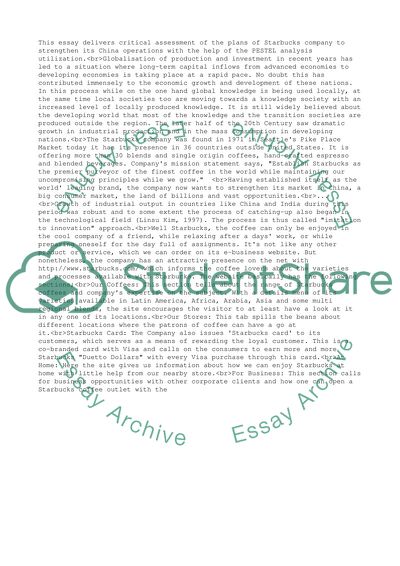Cite this document
(“Evaluation of the Long-term Strategy of Starbucks Company in China Essay”, n.d.)
Evaluation of the Long-term Strategy of Starbucks Company in China Essay. Retrieved from https://studentshare.org/management/1507060-evaluation-of-the-long-term-strategy-of-starbucks-company-in-china
Evaluation of the Long-term Strategy of Starbucks Company in China Essay. Retrieved from https://studentshare.org/management/1507060-evaluation-of-the-long-term-strategy-of-starbucks-company-in-china
(Evaluation of the Long-Term Strategy of Starbucks Company in China Essay)
Evaluation of the Long-Term Strategy of Starbucks Company in China Essay. https://studentshare.org/management/1507060-evaluation-of-the-long-term-strategy-of-starbucks-company-in-china.
Evaluation of the Long-Term Strategy of Starbucks Company in China Essay. https://studentshare.org/management/1507060-evaluation-of-the-long-term-strategy-of-starbucks-company-in-china.
“Evaluation of the Long-Term Strategy of Starbucks Company in China Essay”, n.d. https://studentshare.org/management/1507060-evaluation-of-the-long-term-strategy-of-starbucks-company-in-china.


